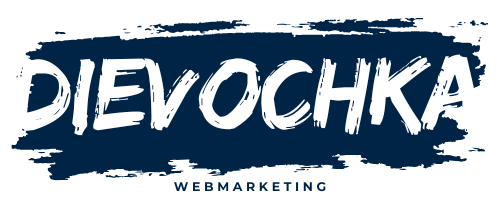In the bustling world of digital marketing, where strategies are crafted and tested at a breakneck pace, it’s no longer sufficient to simply create content. We need a strategy that not only captures attention but also fosters a deep connection with our audience. With the right tools and a keen understanding of social media dynamics, we can craft a content marketing strategy that genuinely works. As we delve into the nuances of this craft, we’ll explore how each step can be meticulously designed to align with our brand goals. Let’s begin this journey together.
Understanding Your Audience: The Bedrock of Strategy
Before we even put pen to paper or cursor to screen, we must first immerse ourselves in the world of our target audience. Who are they? What are their needs, desires, and pain points? Without this foundational knowledge, our content, no matter how well-polished, will flounder in the digital abyss.
Creating a detailed audience persona is the first step. This goes beyond simple demographics; we need to dive deep into their social media habits, lifestyle choices, and even their preferred communication channels. By doing so, we align our content with their expectations and preferences.
But understanding our audience doesn’t stop there. We should actively seek feedback through comments, surveys, and analytics. Monitoring these interactions will provide insights into what’s working and what’s not. Content that resonates with our audience isn’t a one-and-done task; it’s an ever-evolving conversation.
Ultimately, when we understand our audience, we create content that speaks directly to them, transforming our marketing efforts from noise into a narrative they want to hear.
Setting Clear Goals: The Compass of Our Journey
Every successful content marketing strategy requires a clear set of objectives. Without them, our efforts risk becoming aimless, much like a ship without a compass. Our goals act as the guiding star, steering our strategy towards measurable success.
Defining these goals begins by asking the tough questions: What do we hope to achieve with our content? Are we aiming to increase brand awareness, drive traffic to our blog, or perhaps boost SEO rankings? Once identified, these goals should be SMART: Specific, Measurable, Achievable, Relevant, and Time-bound.
By setting clear objectives, we lay the groundwork for a focused strategy. It allows us to map out a route that ensures our business thrives and maintains a competitive edge. But more than just setting goals, we must regularly revisit and reassess them. The dynamic nature of the digital world requires us to be agile, adjusting our strategy as needed to stay on course.
In essence, our goals are the lens through which we view our content marketing efforts, ensuring that every piece of content we produce is purpose-driven and impactful. {image_content}
Choosing the Right Channels: Where Our Audience Lives
Navigating the vast landscape of social media and digital platforms can feel overwhelming, but selecting the right channels is crucial for the success of our content strategy. This decision should be informed by a deep understanding of where our audience spends their time.
Each platform has its own unique culture and user base. LinkedIn, for instance, serves professionals, making it ideal for B2B content, while Instagram’s visual appeal suits lifestyle brands targeting younger demographics. Facebook offers a broad reach, and TikTok captivates with its short, engaging videos.
Our choice of channels should align with our business objectives and the preferences of our target audience. A well-rounded strategy may involve a mix of platforms, but spreading ourselves too thin can dilute our efforts. Prioritizing a few key channels allows us to develop a more focused and impactful presence.
Once we’ve established where our audience resides, we can tailor our content to suit each platform, capitalizing on their unique features and strengths. This strategic approach ensures our message is not only heard but also well-received.
Crafting Compelling Content: The Heart of the Strategy
Creating content that captivates and engages is both an art and a science. It’s the heartbeat of our marketing strategy, breathing life into our brand. To craft content that commands attention, we must strike a balance between creativity and strategy.
Firstly, our content must reflect our brand‘s unique voice and values. Consistency here builds trust and recognition. But beyond voice, we should focus on value. Every piece of content should offer something valuable to our audience—be it information, entertainment, or solutions to their problems.
The variety is key. From blog posts and infographics to podcasts and videos, diverse content keeps our audience engaged and eager for more. Yet, while diversity is essential, quality should never be compromised. High-quality, well-researched content establishes credibility and authority in our field.
Moreover, leveraging SEO best practices ensures our content reaches a wider audience. This involves strategic keyword placement, crafting engaging meta descriptions, and optimizing for mobile users.
Ultimately, by producing compelling content, we create a vibrant dialogue with our audience, turning casual browsers into loyal brand advocates.
Utilizing Tools for Efficiency: Enhancing Our Strategy
In today’s fast-paced digital landscape, leveraging the right tools can significantly enhance the efficiency of our content marketing strategy. These tools streamline processes, provide valuable insights, and help us stay ahead of the curve.
From content management systems like WordPress to social media schedulers such as Buffer, there’s a myriad of options available. These platforms not only simplify the content creation and distribution process but also offer robust analytics that help us understand audience engagement.
Analytics tools like Google Analytics and SEMrush are invaluable for tracking performance. They provide data on which content resonates most and which channels drive the most traffic, allowing us to refine our strategy accordingly. SEO tools, on the other hand, ensure our content is optimized for search engines, increasing our visibility and reach.
By incorporating these digital tools into our workflow, we enhance our ability to create content that is not only effective but also efficient. They allow us to focus on the creative aspects of content creation, confident in the knowledge that our strategy is grounded in solid data.
Crafting a successful content marketing strategy is an intricate dance of understanding audience, setting clear goals, choosing the right channels, crafting compelling content, and utilizing tools for efficiency. When executed with precision and creativity, this strategy becomes a powerful symphony that resonates with our audience and advances our business objectives.
As we move forward, let us continually refine our approach, adapting to the ever-evolving digital landscape. By staying attuned to the needs and preferences of our target audience, we ensure our content remains relevant and impactful. In the dynamic world of content marketing, success is not a destination but a continuous journey of learning and adaptation.
Together, let’s embrace this journey, crafting strategies that not only work but also inspire and engage. Our commitment to excellence in content marketing will shine through, setting our brand apart in the digital realm.
FAQ
What are the initial steps to building an effective content marketing strategy?
Begin by clearly defining your goals and target audience. Conduct a thorough analysis of your competitors and market trends. This insight will guide the creation of a content plan tailored to meet your objectives and engage your desired audience.
How do I identify and understand my target audience?
Utilize tools like surveys, social media insights, and customer feedback to gather data on your audience’s preferences and behaviors. Developing detailed buyer personas will help you align your content with their needs and interests.
What types of content should I include in my strategy?
Incorporate a mix of content types such as blog posts, videos, infographics, and podcasts. This variety caters to different audience preferences and ensures a broader reach across multiple platforms.
How can I measure the success of my content marketing efforts?
Monitor key performance indicators (KPIs) such as website traffic, engagement metrics, lead generation, and conversion rates. Analyzing these metrics will provide insights into what’s working and where improvements can be made.
How often should I update or revise my content marketing strategy?
Regularly review your strategy, ideally every quarter, to ensure it aligns with current trends, audience behavior, and business goals. Adapt your approach based on performance data and feedback to maintain effectiveness.



